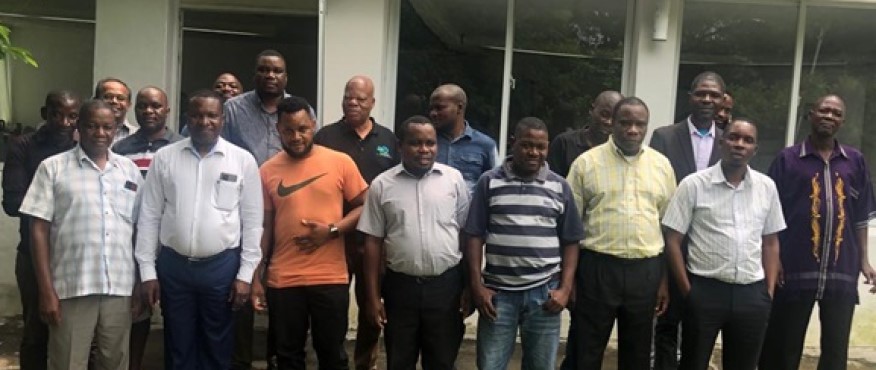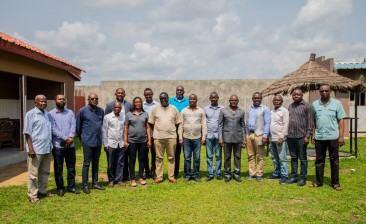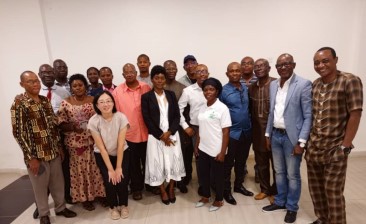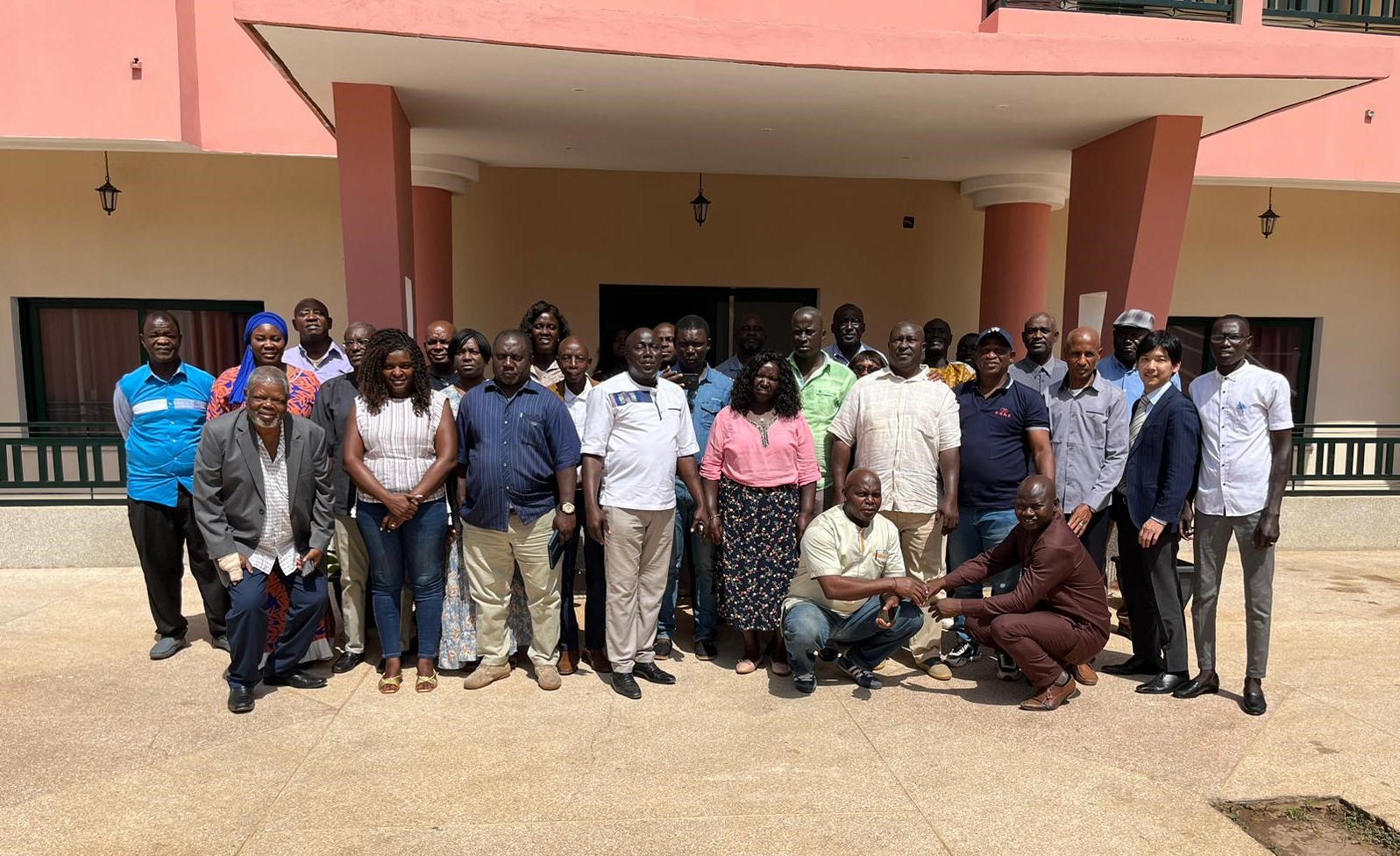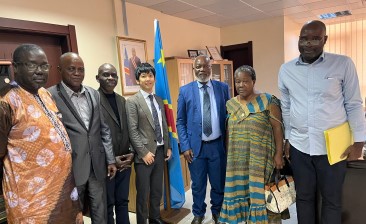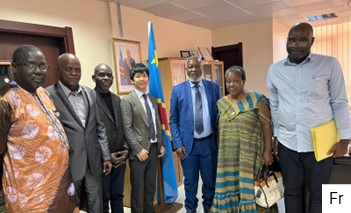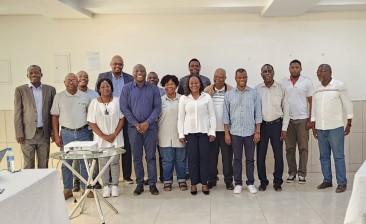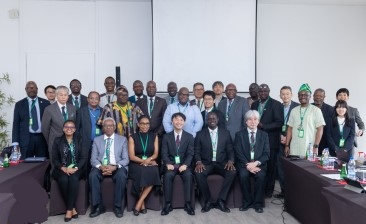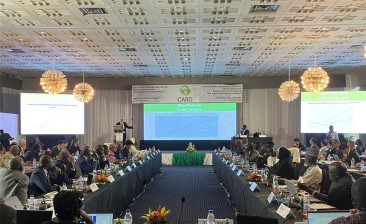Malawi, January 2023
Second CARD Working Week (WW-2) for formulating Second National Rice Development Strategy (NRDS-2) in Malawi
Malawi is one of the new member countries under CARD’s phase II (2019-2030). Stagnant maize yields and climate change related impacts on other traditional crops have prompted Government of Malawi (GoM) to diversify crop production to other food and cash crops in small holdings. Rice production in Malawi has picked up pace following GoM’s major push on crop diversification. Rice has become a suitable alternative to maize farmers as the consumption of rice has started to grow in the recent decades. Locally produced rice such as Kilombero and Supa are consumed in neighbouring countries such as Tanzania, Zambia and Mozambique. Hence rice is considered as one of the important strategic crops for food security and exportation.
Although Malawi was not a member of CARD during phase-I (2008-2018); GoM developed National Rice Development Strategy (NRDS-1; 2014-2018) with support from Norwegian Agency for Development Cooperation (NORAD). To implement NRDS-1, GoM also established a National Rice Development Platform (NRDP) in which all the stakeholders engaged in rice value chain become members under a business plan. However, the business plan did not take off, as it required membership fee payments from smallholder farmers and higher operational costs. Hence, despite the advantages of rice farming in Malawi, the area under rice production has stagnated at around 60,000 Ha and yield around 1.6 t/Ha over the past 5 years.
Since the joining of CARD phase-2, several online and personal meetings were held between Ministry of Agriculture (MoA), CARD Secretariat and JICA-Malawi office to prepare a second National Rice Development Strategy (NRDS-2). MoA has also designated a taskforce for formulating NRDS-2. Subsequently, the NRDS taskforce requested CARD Secretariat to organize a working week (WW-2) for identifying key issues that affect rice sector development in Malawi, which could then lead to formulating the NRDS-2. CARD Secretariat dispatched Regional Consultant (the reporter) to facilitate technical discussions on the current situation of rice value chain in Malawi. This report provides a summary of activities and outputs from the mission.
CARD activity and the results
Primary purpose of this mission was to assist the NRDS taskforce members of Malawi in (1) analysing the current situation of rice sector development, (2) identifying major issues from along the rice value chain that could be targeted under the NRDS-2, and (3) drawing a way forward on NRDS-2 formulation process.
The Working Week (WW-2) was organized by the NRDS taskforce members with support from JICA Malawi office at Blue Waters Hotel in Senga Bay (Salima District) between 23rd and 27th of January, 2023. To allow movement (travel) for many of the taskforce members who are stationed away from the venue, the meeting began mid-morning of day-1 and closed by noon on day-5. In effect, the meeting lasted for 4 days.
About 20 participants and resource persons from private sector participated during the week. Following formal introduction and opening, CARD’s Regional Consultant briefed the participants on CARD and its modes of action in various member countries, and explained how the NRDS-2 formulation could become an integral process of CARD’s goal in doubling rice production and periodic monitoring and evaluation of progress.
Data on key parameters of rice sector under overall, resilience, industrialization, competitiveness, and empowerment categories were not available until recently in Malawi. National Consultant who was engaged by the NRDS taskforce in collecting baselines on various indicators set by the government and NRDS taskforce presented findings from the survey. The baselines will become useful in evaluating the progress under NRDS-2 in Malawi and the region. Baseline figures served as a starter for discussions by the participants on current situation of rice sector in Malawi.
Using a value chain matrix, the CARD’s Regional Consultant explained to the participants on how key issues faced by rice sector can be identified. Using seed as an example, he explained how strengths, weaknesses, opportunities, and threats could be identified and how key issues along the rice value chain can be derived. These key issues will then be used to design goal, strategic objectives, and approaches under the NRDS-2. The participants were then divided into two groups, based on their expertise and interest. Each group designated a group leader and notes-taker for preparing matrix of analyses through brainstorming on rice value chain segments.
Key issues identified by the participants from along the rice value chain are listed below:
(A) Land
- Review of land act to encourage commercialization among rice producing farmers
- Poor management of rice schemes/infrastructure. The NRDS should address issues of ownership for farmers and enable farmers to maintain the schemes.
- Strategies to protect catchment areas to manage the soil erosion and land degradation.
(B) Seed
- A semi-formal seed system (QDS) for rice needs to be ‘piloted’ in rain fed areas, and for new varieties that need promotion
- Improve availability, accessibility, and affordability of quality seeds.
- Manage seed quality to facilitate production of quality grain.
- To strengthen capacity at all levels (Research, Extension, Finance, Business/Entrepreneurial skills, policy)
(C) Fertilizer
- Private sector blending facilities in Malawi should be accredited/certified (endorsed)
- Understand soil nutrient status to determine appropriate fertilizers in rice producing areas
- Synchronization of policy, act, regulations, guidelines, and strategies (internal)
- Integration of inorganic and organic fertilizers
(D) Water Management
- The country has no policy that directly deals with the water management in rice producing areas and there is inadequate resources to implement different policies related to water management
- Poor catchment management results in siltation of water bodies, policies are conflicting: – Land policy vs Irrigation policy – one pronouncing increase in area under irrigation which leads to river bank cultivation at the expense of prescribed good catchment management guidelines
- Low uptake of modern technologies on water management
(E) On-farm mechanization
- Fragmentation of land and small land holding sizes in rice farming limits small- and large-scale mechanization.
- Build capacity to grassroot stakeholders in R&D and Manufacturing, management, maintenance and operation of machines, equipment and implements.
- Promote appropriate and durable machines, equipment, implements, spare parts etc. for small and large farmers.
- Mechanize postharvest handling (including drying) of rice.
(F) Crop Production & Management
- Address capacity on R&D, Extension, Farmer Organization, Agronomy, Breeding, and Pathology among others in relation to rice value chain.
- Popularize and facilitate adoption of high yielding and resilient rice varieties.
- Develop a hybrid rice program to further increase productivity.
(G) Postharvest handling, Processing
- Inadequate experts in research development under rice Post harvest management
- Inadequate and dilapidated storage facilities which should serve as ‘aggregation points’ to provide an opportunity for a better off-taking arrangement negotiated based on aggregated produce and better quality of grains
- Inadequate quality control measures, harvesting/processing, and testing techniques.
(H) Marketing, Trading, Value Addition
- Lack of research on alternative ways of consuming rice and range of by-products which could increase value addition, improve residual value and diversifying nutritional value
- Lack of an accredited testing laboratories – there is need to accredit the MBS lab on rice grain testing
- Mixed grades and varieties which affect marketing and value addition. From the farmers’ perspective better processing equipment (sorting, grading, packing) would assure more value by selling the same quantity at different prices reflecting the quality/value
Based on the issues listed above, the participants had set the goal for NRDS-2 as to “drive Malawi’s economic growth and food security through rice sector development”. The participants further set the target under NRDS-2 as doubling of paddy production, from 155,433 tons (before milling) in 2022 to 311,000 tons by 2030.
Way forward
NRDS taskforce has agreed to gain further momentum on formulating the NRDS-2 by organizing another working week (WW-3) in March, and drafting and finalizing the NRDS-2 by July 2023.
